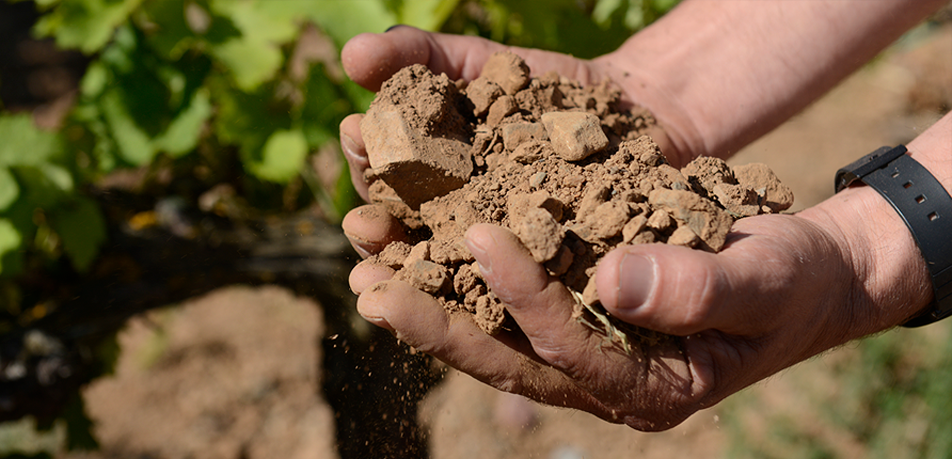THE HEARTBEAT OF THE EARTH

We almost take for granted that differences in soil type affect the resulting wine. But if we take a closer look at the essence and characteristics of a specific soil – and pay close attention – we can understand the how and why.
So in that spirit, let's take a trip to our El Lloar winery, in the untamed reaches of Priorat, to examine our wines from a soil perspective: the heartbeat of the earth, a nervous system wired in llicorella schist.
The region’s schist soils produce a certain degree of nutrient and water stress in the vines. Under these conditions, the must displays very low concentrations of compounds1 that act on the yeasts during fermentation. So when the yeasts set their physiological magic in motion, they start to compensate by producing acid2, which is more pronounced in wines grown in low-pH soils (i.e. llicorella schist) like those found in Priorat.
[[{"fid":"21291","view_mode":"default","fields":{"format":"default","alignment":"","field_file_image_alt_text[und][0][value]":false,"field_file_image_title_text[und][0][value]":false},"type":"media","field_deltas":{"1":{"format":"default","alignment":"","field_file_image_alt_text[und][0][value]":false,"field_file_image_title_text[und][0][value]":false}},"link_text":null,"attributes":{"height":561,"width":841,"style":"height: 334px; width: 500px;","class":"media-element file-default","data-delta":"1"}}]]Schist (llicorella) soil at Mas de la Rosa vineyard (Porrera, DOQ Priorat), a Familia Torres property
Much like the rings of a tree reveal its age, the soil leaves a signature, a subtle recollection of everything that transpired on its surface.
Climatic events, rainfall frequency, winegrowing and winemaking practices, varieties, as well as the mental associations we draw from our experiences as wine lovers add up to how our senses perceive soil in the wine glass.
[[{"fid":"21292","view_mode":"default","fields":{"format":"default","alignment":"","field_file_image_alt_text[und][0][value]":false,"field_file_image_title_text[und][0][value]":false},"type":"media","field_deltas":{"2":{"format":"default","alignment":"","field_file_image_alt_text[und][0][value]":false,"field_file_image_title_text[und][0][value]":false}},"link_text":null,"attributes":{"height":628,"width":941,"style":"height: 334px; width: 500px;","class":"media-element file-default","data-delta":"2"}}]]Miguel Torres Maczassek (5th generation) at the entrance to our El Lloar winery (DOQ Priorat) with terraced llicorella vineyards in the background
Our nose might struggle to pick up the weight and passage of history in the geology of Priorat, or the aroma of the nearby Mediterranean in the schist, but they are present – as undeniable as the influence of the soil on the aromatic profile of Mas de la Rosa.
It is important to understand the complexity of the soil’s contribution to the organoleptic profile of a wine; and how these multiple factors become even more complex once our senses come into play and try to interpret them. This is where the humanity of wine meets the heartbeat of the earth.
________________________________
1Nitrogenous compounds
2Succinic acid
